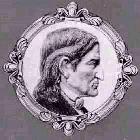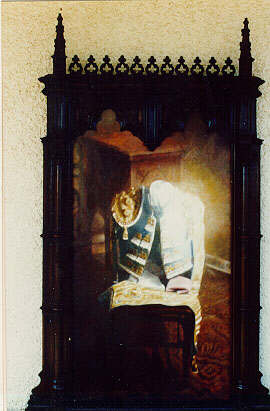

|
Pedro Extremeraperceives enchantment and the charm of reality as the miracle which pulses in a sun, which withdraws behind all things. |
|
Pedro Extremera was born in Madrid in 1949. The early part of his youth was spent in the atmosphere of artistic restlessness of post-war Madrid. He obtained a position in the studio of a good painter, Demetrio Salgado. However, from the very beginning, Extremera has been himself and has had his own personal and unmistakable way of conceiving and painting. Toasted ochres, sienas, dark greens, creamy white, antique and choice golds ... a profound understanding of how technique turns into intuition and of the magic of things: forgotten objects, suddenly touched by light, return to a living state which screams silently. They flee, unable to move. They are wretched. Or is it the light which brings them, particle-by-particle, brush stroke-by-brush stroke, to reality? Extremera is profoundly a realist. His painting is realist. However, Extremera perceives enchantment and the charm of reality as the miracle which pulses in a sun, which withdraws behind all things. "Light is like a hand which caresses everything. The painter realizes that in the air there exists a certain decomposition of planes, a juxtaposition of images which are more or less the same. He holds the charcoal, he should paint something - the mystery of shadows and of meanings. Perhaps in the inkwell is hidden the name to which all things pay homage. But he does not do it. He thinks that magic is behind all of this. It is a visual deception or a spiritual disturbance which assaults him and thus scatter his knowledge above and beyond the obvious and the traditional. Objects are therefore aligned like soldiers in a war of time, and thus they come to our eyes." (Raul Chavarri: Extremera, the Temptation of Zurburan) With a calm heart we gaze at the bullfighter's suit. Heartbeat by heartbeat, the atmosphere grows, created in the dark side of "behind." It is expectant silence - a death announced from the depths of that which hears the fervent prayer of the man who must wear the suit. Listening to the shadow you will hear a mystery which longs to be self-narrative. In Luces para un terno (Lights for a Toreador's Suit) the magic of an ancient ritual is shown and created in front of us. It is a magic which the ritual ascribes to itself from the profundity of a splendor which must make the reality of an undefinable battle possible. It is more than a painting. It is the idea, voiced and felt, of "have to be," of the battle of man with his own idea of himself. It is, in short, the silence of the confrontation with one's own existence. This, then, is a beginning to the understanding of a painter for whom solitude is a leit motiv - chairs without personages, for example. He achieves this through objects one cannot identify, such as a kiss of light or an illuminated shadow. Extremera's painting Luces para un terno still bears the import sticker from Teheran, Iran where it was to have been shown in an exhibition of contemporary Spanish painting. The Khomeini uprising, however, caused the cancellation of it. Two years of diplomatic negotiations were needed to return those paintings to Spain. His collective and individual exhibitions have been viewed in Madrid, Zamorra, Barcelona and the United States (New York State Hispanic Heritage-Albany, New York, 1989). He is a frequent recipient of the BMW Prize for Painting (Spain). |

TITLE: Luces Para Un Terno Please contact the Gallery to receive photographs of his work or to schedule an appointment to see the work in person. Contact information is provided on our homepage. |